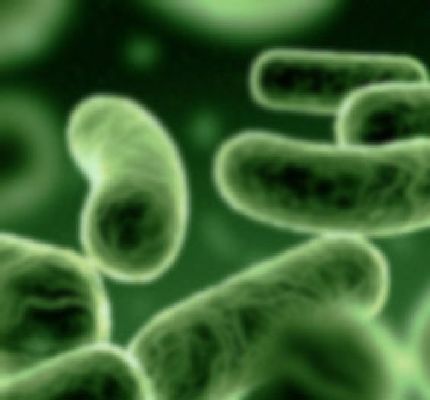Pneumonia is usually cold complications. Although colds can be transmitted from person to person, bacterial pneumonia is not contagious. Pneumonia is a disease that results from infection of the respiratory tract and lungs, some microbes. When a person has pneumonia, lung tissue can fill with pus and other liquids, making it difficult for oxygen in the air bags light to reach the blood. With pneumonia, a person may be shortness of breath and cough and fever are. Sometimes a person may have chest or abdominal pain and nausea, too. This makes it difficult for the patient to breathe properly and can cause death within 3 -4 days if not treated. This affacks mainly children under 5 years old, but adults can also have it. Each year over 60,000 Americans die of pneumonia - pneumonia usually caused by infection with bacteria, viruses, fungi or other organisms. Pneumonia is a particular concern for the elderly and people with chronic illnesses or impaired immune system, but can also affect young, healthy people. Worldwide is the leading cause of death of children, many under the age of the year. About 80% of cases of pneumonia caused by viruses, bacteria and 20%. Viral pneumonia is usually milder than bacterial pneumonia. Bacterial pneumonia in the elderly is often atypical clinical presentation and poor prognosis. Clinical manifestations are often atypical. Fever is recorded only in 58% of cases and extra-respiratory symptoms are common. Pneumococcus and Haemophilus influenzae bacteria are the most common pathogens. Diagnosing pneumonia may be severe in some people, especially those with other diseases. With the advent of modern microbiology, classification based on the causative microorganism became possible. Determine which organism causes pneumonia rights is an important step in determining the type and length of treatment. Sputum, blood cultures, tests on respiratory and specific blood tests to determine the microbiological classification. Because such laboratory testing typically takes several days, microbiologic classification is usually not possible at the time of initial diagnosis. Although antibiotics can treat some of the most common forms of bacterial pneumonia antibiotic-resistant strains growing problem. Many patients arrive in U.S. hospital emergency receiving antibiotics based on federal guidelines for treatment of pneumonia do not need drugs, says a new study. This means that the user may not be feasible and may contribute to the growing problem of antibiotic resistance, the study authors said. Researchers studied in 2004, the main provision that provides that emergency physicians manage antibiotic within four hours in adult patients displaying symptoms of pneumonia. Centers for Medicare and Medicaid Services (CMS) and Joint Commission on Accreditation of Health Organizations (JCAHO) established the direction as the main measure hospital performance. Earlier studies have shown that the use of antibiotics during this time window was associated with a small decrease in mortality. University HealthSystem Consortium is to achieve 90 percent in accordance with management. The University of California, San Francisco, where research was done without physician staff bonuses depend on this show. A study conducted in 2005, after which the group of 152 emergency room patients who met the criteria for receiving antibiotics. Of this group 65. 1 percent received antibiotics within four hours of arrival at hospital. The remaining 34. 9 percent were defined as "emissions", and more than half (58. 5 percent) emissions are not the final diagnosis of pneumonia. And 43 percent of emissions was abnormal chest x-ray, compared with 95 percent of those who received antibiotics. "It was not possible in many cases actually gave them antibiotics because many of them do not actually have pneumonia or got a diagnosis later," said Dr. Jesse Pine, author of the accompanying editorial in the journal, and a doctor in the emergency medical care in the hospital of the University of Pennsylvania. It supports the cheap strattera results of the study. The authors concluded that it may be possible to identify 90 percent of emergency department patients hospitalized with pneumonia using the current JCAHO / CMS case definitions. Or purpose or determining to change, say researchers. Pneumonia is the leading cause of emergency visits, Pine said. Many experts criticize the leadership and research, in which they are based. "I think it is extremely difficult and controversial when CMS and Joint Commission to establish national performance standards based on retrospective, clinically unconfirmed retrospective studies," said Dr. Tareg Bay, Professor of Medical Emergencies and Director of International Emergency Medicine at the University of California in Irvine. "I can easily imagine that this program will lead to increased resistance to antibiotics of bacteria pneumonia just because doctors prescribe antibiotics earlier and more frequently to achieve the objectives of the program CMS." Performance of medicine is fundamentally a good thing, but it should be based on very strong scientific data, "Bay added." Retrospective studies alone, and do not recognize the complex interdependence of our highly stressed health care system is not good enough to link 4:00 a rule to pay for performance program. "

Pine said that the leadership can not even solve the basic underlying problem that ambulances crowding." That is why ambulances are so overcrowded, obtain chest x-ray and doing all the things that go for a quick diagnosis of pneumonia is not possible, "he said." What happens to performance measures is that patients with suspected pneumonia end to receive antibiotics before they have a diagnosis in order to meet mandatory state standards. "




